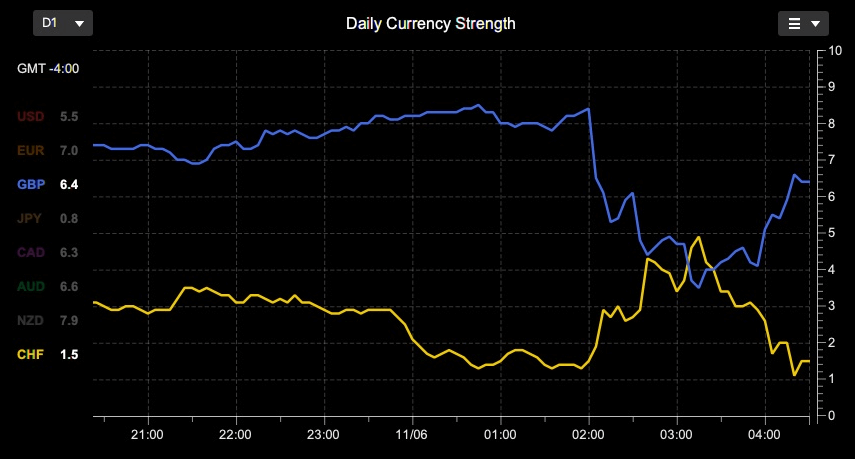Choosing the Best Currency Strength Meter
Choosing the right currency strength meter is extremely important because inaccurate or incomplete currency strength data could cause missed trade opportunities as well as costly trade errors.
There are a huge number of different currency strength meters available. Unfortunately the quality of these strength meters varies greatly, so it’s important to go through a quality checklist when assessing any currency strength indicator.
We have several currency strength meters that satisfy these all these quality criteria. You can find our currency strength meters HERE.
However, feel free to use any other currency strength meter that you may come across. Just make sure to assess them carefully first.

Is the Currency Strength data accurate?
This is the first and most important thing to check.
You’ll need to check the currency strength data against a reference. You can use our free online live daily currency strength meter as a reference. You can find it HERE. It uses data from our currency strength data servers.
Make sure you select the daily timeframe on the currency strength meter you’re testing and compare the strength values for each of the 8 currencies: USD, EUR, GBP, JPY, CHF, CAD, AUD and NZD.
The currency strength values may not be exactly the same due to normal variations in Forex price data, so long as they’re within 10% of each other and there’s are no large discrepancies. You may need to make some adjustments when comparing the currency strength meter you’re testing if it uses a different scale for currency strength e.g. -10 to 10 instead of 0 to 10.
As a final test, see how the currency strength data compares to what you’re seeing on your Forex trading charts. For example if GBP currency strength is very strong, you should see an upward price move in the GBP/USD pair.
Does the currency strength meter have charts?
If a currency strength meter does not have charts, its use is somewhat limited. The real power of using a currency strength meter is using currency strength trends and crossover points to make trade decisions. You can find a deeper discussion about how to use currency strength charts along with examples here: Currency Strength Charts

Important features of currency strength charts:
- Make sure the chart's currency strength data is accurate.
- Able to easily hide/show currencies. This is important because you usually only need to focus on 2-3 currencies at a time. Displaying all currencies at once makes the chart hard to interpret.
- Make sure the time-zone is adjustable so it can match your Forex charts. This allows you to easily match Forex price action to the currency strength chart.
- Make sure time-frame is selectable.
- Make sure chart supports scrolling so recent history can be viewed.
- Allows zooming in and out.
Does the currency strength meter have alerts?
While not an essential feature, currency strength alerts are nice feature to have because trade setups may take several hours to materialize. Alerts can also be used to signal exit conditions.

Alerts can be set when a currency strength level is reached, or when the strength of the two currencies crossover.
Crossover alerts are especially useful because this condition is often used to open a new trade or close an existing trade.
How frequent are Currency Strength data updates?
The refresh rate refers to the interval between real-time currency strength data updates.
Our Currency Strength Meters have a refresh rate between 0.5 and 1.0 seconds to cater for traders who need to make quick decisions. But for most styles of trading a refresh rate of between 5 and 10 seconds is generally ok.
How reliable is the data connection?
Frequent currency strength data freezes or disconnects during a trading session can be problematic.
These problems are uncommon but you’ll only be able to assess the reliability of the data feed by using the Currency Strength Meter for several days. Make sure it’s reliable during peak trading times.
Key Takeaways
- It's essential to assess the quality of a Currency Strength Meter carefully before using it to make trade decisions.
- Make sure the currency strength data is accurate.
- Make sure the currency strength meter has charts.
- While not essential, currency strength alerts are very helpful when trading.
- Make sure the currency strength refresh rate is under 5 seconds.
- Make sure the data connection is reliable during peak trading times.

